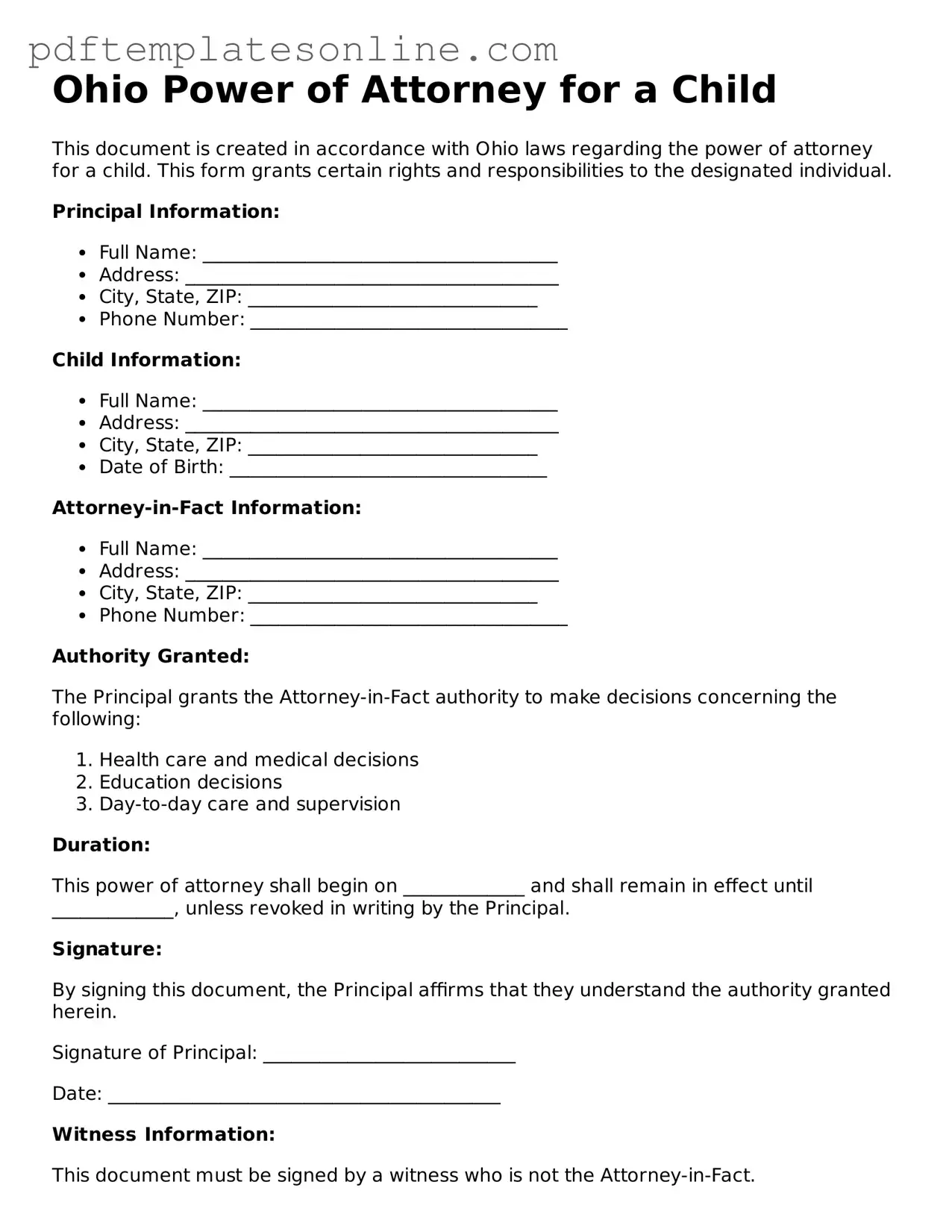Filling out the Ohio Power of Attorney for a Child form can seem straightforward, but many people make common mistakes that can lead to complications. One frequent error is not providing complete information about the child. Ensure that the child’s full name, date of birth, and any relevant identification numbers are included. Missing details can create confusion and delay the process.
Another mistake involves the selection of the agent. It’s essential to choose someone trustworthy and capable of making decisions in the child's best interest. Some individuals may select a relative or friend without considering their ability to fulfill the responsibilities. Think carefully about this choice, as the agent will have significant authority.
People often overlook the need for signatures. Both the parent or guardian and the agent must sign the document. Failing to include these signatures can render the form invalid. Additionally, some may forget to have the form notarized, which is a requirement in Ohio. Notarization adds an extra layer of authenticity to the document.
Another common error is not specifying the duration of the Power of Attorney. It’s important to clearly state how long the authority will last. Some individuals may leave this section blank, which can lead to misunderstandings later on. Clearly defining the time frame helps prevent confusion about when the authority begins and ends.
In some cases, people may not realize that they can limit the agent’s authority. The form allows for specific powers to be granted, and it’s wise to outline these clearly. Some individuals grant broad powers without considering the implications. Limiting authority can help ensure that the agent acts within defined boundaries.
Another mistake involves not discussing the arrangement with the child. Depending on their age, children may have feelings or opinions about who will take care of them. Engaging in a conversation can help ease any anxieties and ensure that the child feels comfortable with the appointed agent.
People sometimes fail to keep copies of the completed form. It’s crucial to retain a copy for personal records and provide one to the agent. This ensures that everyone involved has access to the same information and can refer back to it when needed.
Finally, many individuals neglect to review the form periodically. Life circumstances can change, and it’s important to update the Power of Attorney as needed. Regular reviews can help ensure that the document remains relevant and effective in meeting the child’s needs.
